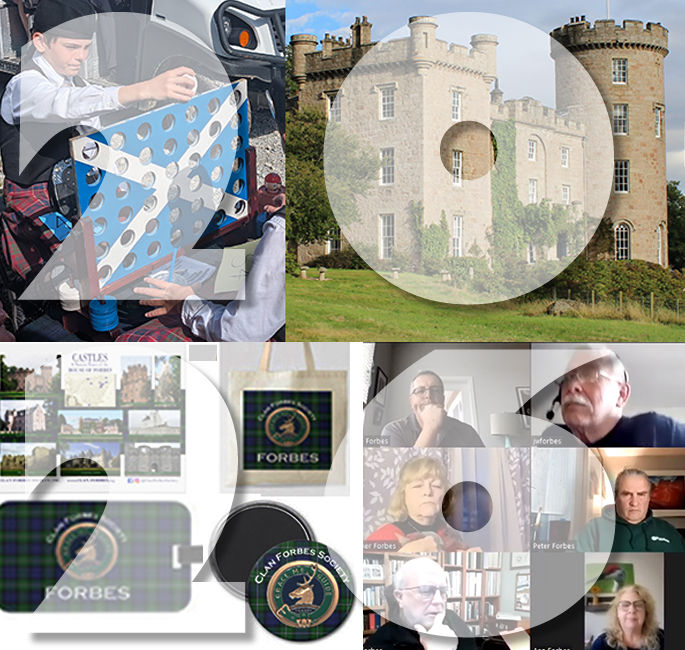The Raid of Ruthven
- Bart Forbes

- Mar 15, 2021
- 4 min read

In 1582, William Ruthven, 1st Earl of Gowrie, devised a plot to abduct the 16-year-old King James VI and remove him from the Catholic influences around him that supported his mother, the deposed Queen Mary. The Raid of Ruthven involved many other powerful Protestant Scottish landholders, including John, Master of Forbes and son of William, 7th Lord Forbes.
When Catholic Queen Mary of Scotland was forced to abdicate in 1567, her one-year-old son became monarch with a series of regents who ruled on his behalf. The first was the Queen’s illegitimate half-brother, James Stewart, Earl of Moray. James Hamilton of Bothwellhaugh assassinated Moray in January 1570. The next regent, James's paternal grandfather Matthew Stewart, 4th Earl of Lennox, was fatally wounded by supporters of Queen Mary just one year later. The next was John Erskine, Earl of Mar, who reportedly "took a vehement sickness" and died in 1572 after a banquet given by James Douglas, 4th Earl of Morton. Perhaps not surprisingly, Morton was the fourth and last regent until James VI was proclaimed of age to rule in 1579. Ironically, Morton was executed in 1581, charged with complicity in the murder of the father of James VI, Henry Stuart, Lord Darnley.

The Scottish ruling class insisted that James VI be raised as a member of the Protestant Church of Scotland, the Kirk. However, he came under the influence French Catholic Esmé Stewart, Sieur d'Aubigny, first cousin of James's father Lord Darnley and future Earl of Lennox. The King made Lennox the only duke in Scotland at that time.
In July 1582, the Earl of Gowrie organized what was called the "Lords Enterprisers" to oppose Lennox’s influence on the King. They seized James during a royal hunting party near the Earl’s castle of Ruthven in Perthshire in August. John Erskine, the Earl of Mar, cut off a rescue attempt made by the soldiers of the Duke of Lennox. The King was taken to the Earl of Gowrie’s townhouse in Perth.
There, the Lords Enterprisers provided their list of reasons for their actions called a “supplication” on August 23, 1582. Their demands included a pure Protestant regime, that had been approved by the General Assembly of the Church of Scotland. The requirements also included tighter financial controls. Due to the Court’s excessive spending, the King owed £48,000 Pound Scots to the Earl of Gowrie, who served as Lord High Treasurer of Scotland.
From Perth, the King was taken to Stirling Castle and moved to several different houses over the course of the next year. During that time, Protestants Francis Stewart, Earl of Bothwell; James Cunningham, Earl of Glencairn; Laurence, Master of Oliphant; and John, Master of Forbes, joined the Lords Enterprisers. The Ruthven regime sent Esmé Stewart, Duke of Lennox, to Dumbarton Castle and then forced him into exile in France. Another opponent James Stewart, Earl of Arran, was imprisoned. Ruthven was opposed by the Earls of Huntly, Crawford, Morton (Maxwell) and Sutherland; and the Lords Livingston, Seton, Ogilvy, Ochiltree and Doune. With their assistance, King James escaped in July 1583. He dismissed the Lords Enterprisers from court.
Throughout this time, Queen Elizabeth of England was kept informed of these matters by her principal secretary Sir Francis Walsingham through the Calendar of State Papers Relating to Scotland. The Calendar notes that on September 21, 1583, “Proclamation by the King of Scotland, offering to forgive all those who will crave his pardon for the public attempt committed against him this last year.” The Scottish Parliament, now rid of the Lords Enterprisers, passed on Act on December 7, 1583, “to condemn the enterprisers at Ruthven that shall not submit themselves to the King's authority, or shall refuse his offers of clemency.” On April 20, 1584, the Calendar reports “News of the capture of Gowry by Colonel Stewart.” The next month, Gowrie was tried, convicted of treason, and beheaded at Stirling Castle.
On May 10, 1584, the Privy Council, demanded that “William Lord Forbes and John Master of Forbes to surrender the houses and fortalices of Drummynour” under pain of treason. They refused and they were issued a summons of treason by an Act of Parliament on August 20, 1584. The Act included:
Archibald Douglas, 8th Earl of Angus;
John Erskine, 19th/2nd Earl of Mar, along with both his wife Dame Agnes Drummond and his mother Annabelle Murray;
Patrick Lyon, Master of Glamis and later 9th Lord Glamis, along with his wife Margaret Lyon, Countess of Cassil;
Sir Thomas Lyon, younger son of John Lyon, 7th Lord Glamis, along with his wife Agnes, daughter of Patrick, 5th Lord Gray;
Laurence, Master of Oliphant, son of Laurence Oliphant, 4th Lord Oliphant;
Patrick Drummond, son of Sir Robert Drummond of Carnock;
Sir John Livingston, son of Sir John Livingston, 6th Lord of Dunipace;
James Douglas and George Douglas, sons of the former Regent James Douglas (the title of Earl of Morton was attainted in 1581); and
Robert Douglas, the Younger, of Lochlevin (brother of William Douglas, later 6th Earl of Morton)
John, the Master of Forbes, fled Scotland and lived abroad for two years. His father William, Lord Forbes, maintained control of Castle Forbes (Druminnor Castle.)




Comments